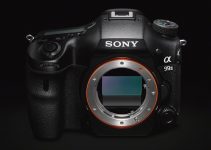Golden hour is a favorite for photographers and filmmakers thanks to its ability to almost always create a gorgeous light for any subject. The lower position of the sun combined with a warmer tone are just so flattering. There is still a good need for the filmmaker to understand how to best take advantage of this lighting.
This can be done through good technique and use of your camera and lens or by learning some unique tricks. Filmmaker Sean Kitching is a fan of golden hour himself for capturing cinematic footage and B roll. If you want to learn some of his tricks then you should watch this video.
1. Pick Your Style
When you are out shooting in golden hour you will want to pick your goal style. There are two main options. The first is to set up a backlit shot with the light coming directly at the camera.
You can get some flares and backlight your subjects. The other one is to use the light as a key and directly illuminating the subject. It’ll create a warm, soft look that fills in your subject.
2. Use a Circular Polarizer
If you are shooting around water or some other object where reflections are common you might want to consider using a circular polarizer, or CPL, filter.
These filters can specifically cut down on the amount of reflections. It’s a useful filter to have around. Plus there is often a degree of added saturation in many shots and will help you get a deep blue sky.
It’s nice to have one in your bag.
3. Setting the Proper Exposure
You’ll need to set your exposure based on the type of look you want. Just following the standard tools likely won’t be ideal since golden hour creates extreme contrast, especially with backlighting. You may want to underexpose your subject to capture a lot of detail in the background and create a silhouette.
You can also opt for the opposite and completely blow out the background to keep the detail in the subject. In either case you need to make a decision to make sure your footage is where you need it when you head to the edit.
4. Set a Custom White Balance
Golden hour lighting is naturally a little warmer. However, auto white balance might actually work against you here to make it a bit more neutral. Also, in some cases the light might not be as warm as you want it to be at that moment and setting a custom white balance that can move your colors in the warmer direction is a nicer place to start as you edit.
It doubles down on the colors you are already seeing during this time. The trick is the higher color temperature numbers result in warmer colors and the lower produces the opposite.
5. Don’t Miss Blue Hour
While golden hour gets all the attention there is also the lesser-known blue hour that is well worth your time. This is the hour either directly before the sun rises or after the sun has set. You should still have a fair amount of natural light even though the sun is below the horizon and the light will start to take on a cooler tone – hence the name “blue” hour.
A nice part of this if you are shooting in or near a city or town is that artificial lighting presents a brilliant color contrast which you can capture.
Are you a fan of golden hour?
[source: Sean Kitching]
Disclaimer: As an Amazon Associate partner and participant in B&H and Adorama Affiliate programmes, we earn a small comission from each purchase made through the affiliate links listed above at no additional cost to you.



